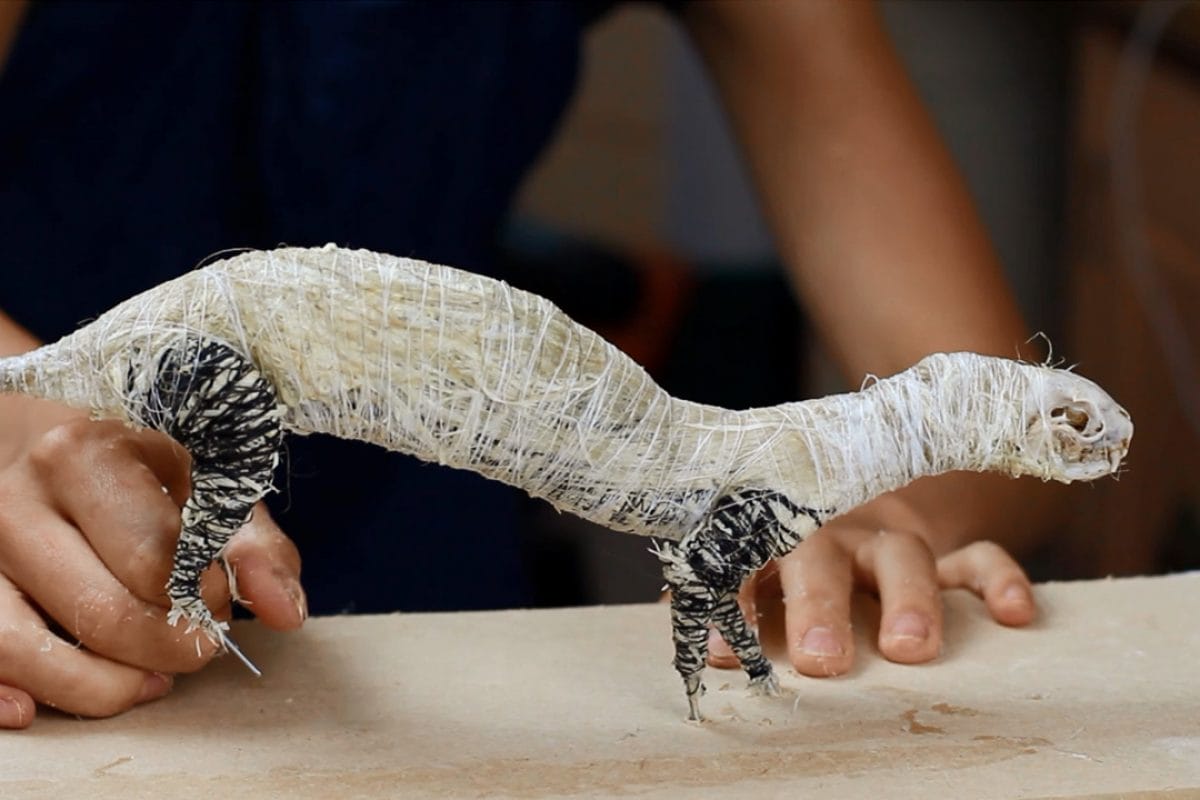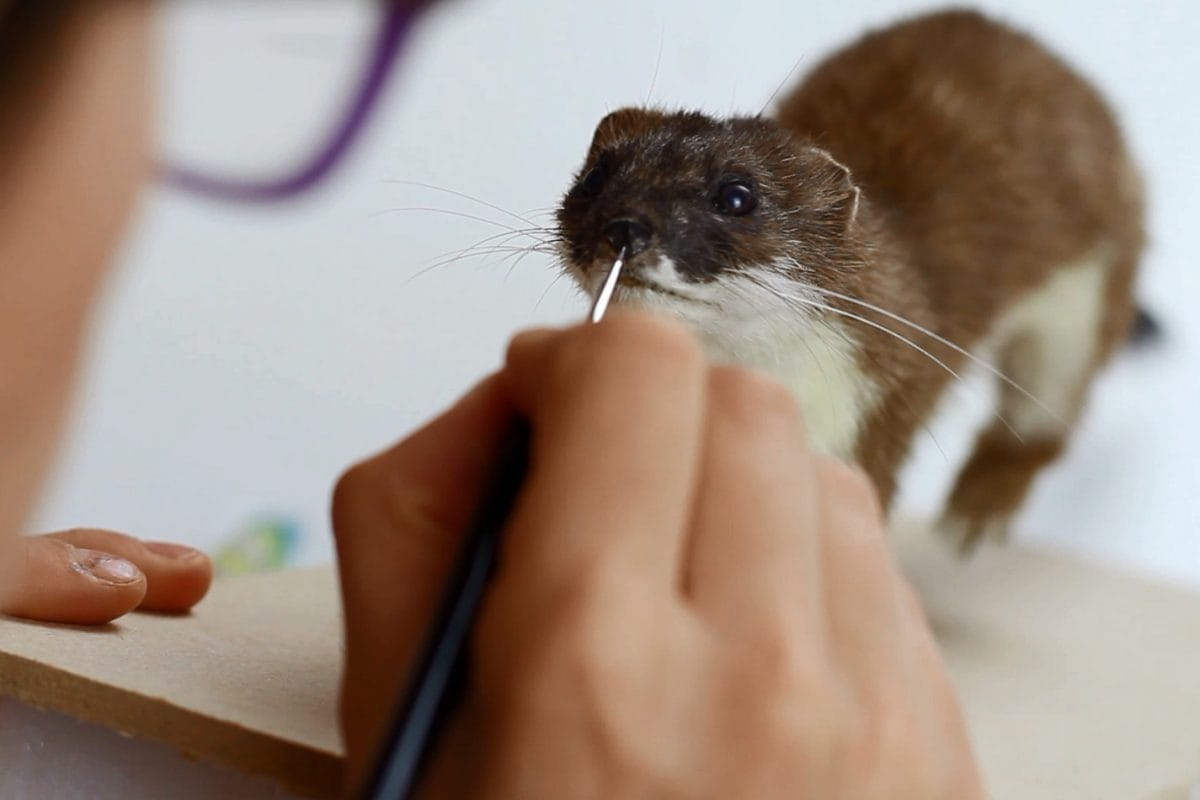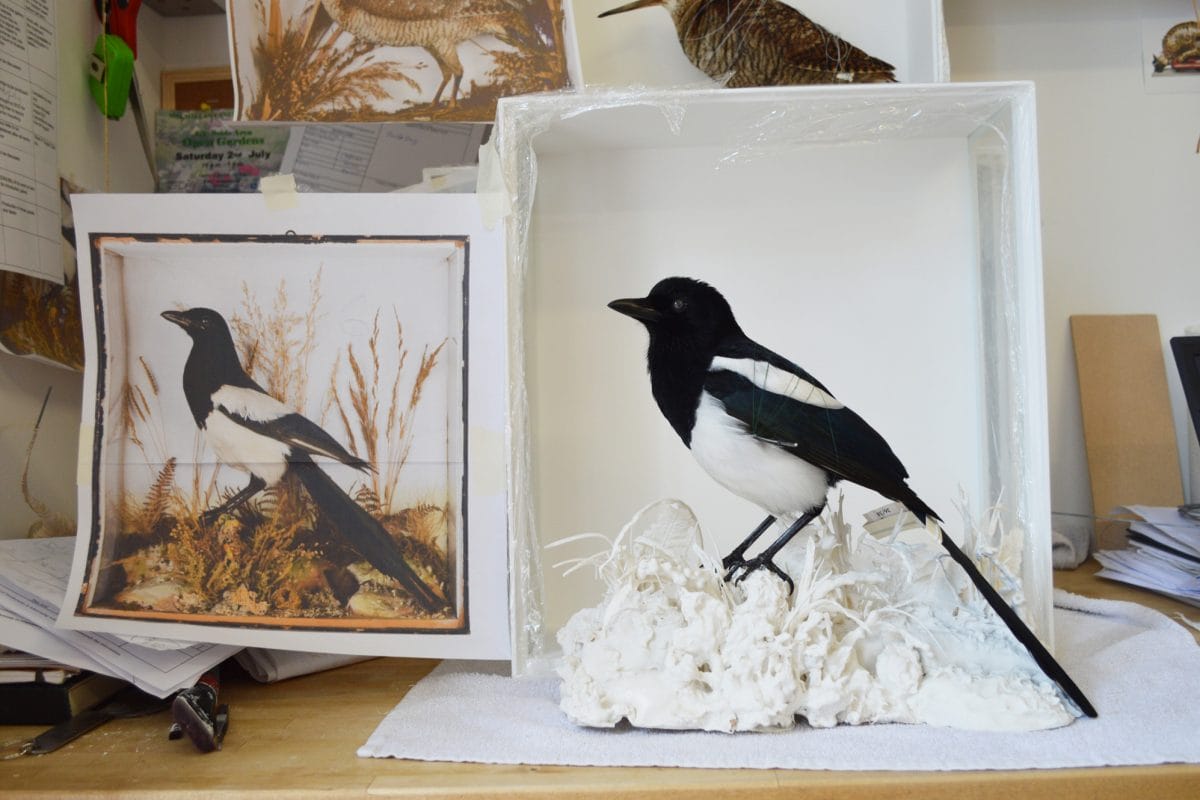How do you create taxidermy?
Taxidermy involves a lot of processes and skills. The first thing that must be done is to collect all of the details about the specimen – how, when and where it died. There are many laws to protect wildlife in the UK that taxidermists must adhere to. So it is important to check if the species you are working with needs specific legal paperwork.
Then comes the skinning, which I think many presume will be very messy but it’s not that bad. Underneath the skin is a membrane that acts like a second skin keeping the body together in one piece. Working carefully between these layers means the skin can be simply peeled away.

If all goes well not much blood is actually present. If I am working on a mammal, the skin must be pickled and tanned in a similar process to leather. Whereas with birds, all of the fat must be cleaned away from the feather tracts where the quills poke through on the inside of the skin.
Then the form replacing the muscular structure of the animal has to be created using measurements taken from the actual animal’s body to recreate the same shape and size. Taxidermists use a variety of materials to make this form, I use carved balsa wood for birds and a bind-up for the mammals.
A bind-up is made by wrapping wood-wool (fine, soft wood-shavings, typically used as a packing material) tightly around wire using cotton thread to hold the structure together. In both birds and mammals the skull is cleaned and used within the head. Some of the wing and leg bones are kept attached to the bird skin with all the flesh cleaned away.
The skin is then mounted onto the form, the facial expression is sculpted under the skin often with clay and the eyes are made from glass or acrylic. Once the piece has dried, any skin not covered by fur or feathers loses its colour turning a dark yellow or grey. Such as around the eyes, within ears, on pads of the feet of mammals and legs and bills of birds. Finally the last stage is to paint these areas using acrylic paints.
See a video of this process below. Please be aware that this video shows scenes of animals being skinned and flesh being removed from bones.
How long will an artwork take to complete from start to finish?
It depends on the size and type of the animal. For instance, larger mammals take longer as there is simply more body to build and skin to sew, also a longer time is needed to pickle a larger skin and for the piece to then dry once finished. On the other hand, a smaller specimen such as a tiny bird, needs a far more delicate approach working slowly so as not to rip the skin.
I would work on a larger mammal over a period of a month while the skin pickles and dries. And although I can complete a small bird in one day, I prefer to break up the stages over a few days so I can take my time and get the piece right. Alongside making the taxidermy I create the cases and groundwork to accompany them and often will be working on several pieces at once.


Do you have to know a lot about zoology and natural history?
To be a good taxidermist you must have a keen love of animals and the natural world to understand the way they live and move.
I did not study Zoology or Natural History but have always been fascinated by nature and learnt a lot through physically making taxidermy. I have discovered so much about the individuality of species through working closely with the animals in a way I’m not sure I could have from a distance.
How did you get into Taxidermy as a career?
When I finished university in 2007 I wanted to work in museum conservation and so volunteered at the Booth Museum of Natural History in Brighton.
While I was there my focus turned to the taxidermy and I decided to give it go with the help of the museum’s Curator. After that I wanted to be a taxidermist and spent the years that followed practising and learning about the craft.
I now work with the Booth Museum often and am grateful that they helped point me in the direction I have taken. Museums are amazing places that can truly inspire.



